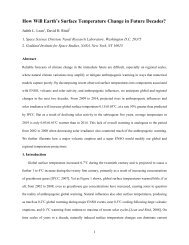Hale Sector Boundaries.pdf - Leif and Vera Svalgaard's
Hale Sector Boundaries.pdf - Leif and Vera Svalgaard's
Hale Sector Boundaries.pdf - Leif and Vera Svalgaard's
- No tags were found...
Create successful ePaper yourself
Turn your PDF publications into a flip-book with our unique Google optimized e-Paper software.
Svalgaard et al.Figure 6: The average magnetogramfor a nominal (+) sectorseen ‘face on’ in the northernhemisphere. Appropriate data(WSO 1976-2010) has been mirrored<strong>and</strong> sign-reversed as describedin section 2.3. The sectorboundary is marked by thesemi-transparent bar. The semitransparentcircle encloses thearea that is mainly contributingto the Sun’s mean field also measuredat WSO (Scherrer et al.,1977).4. DiscussionThe findings of preferential photospheric magnetic fields to heliospheric magneticfield (HMF) sector structures suggests one of a number of possibilities. The mostobvious is that these photospheric structures are responsible for the HMF, <strong>and</strong>hence a correlation would simply be consistent with the Potential Field SourceSurface models (Schatten et al., 1969; Altschuler <strong>and</strong> Newkirk, 1969) wherein theHMF was seen as an extension of the solar field, as the solar wind plasma grippedthe field <strong>and</strong> extended it into the solar wind. This, however, seems insufficient toexplain our findings, since these models are symmetric, with regard to Left-Rightor East-West h<strong>and</strong>edness. So, if the cause were to be a coronal phenomenon, wewould not expect the high degree of asymmetry we find.From our underst<strong>and</strong>ing, of the relative high abundance of field orientation(active region formation, going along with <strong>Hale</strong>’s polarity laws) relative to the<strong>Hale</strong> sector boundaries we show in Figure 1 <strong>and</strong> the orientation of the subsurfacefield in accordance with, say the Babcock-Leighton dynamo models, it seems thatthe association is more deeply rooted on the Sun, than in the corona. One suchpossible explanation has recently been put forward, <strong>and</strong> although it seems to beconsistent with our findings, the author was aware of our earlier findings whenhis theory was developed, so this is not any new support for his theory.This involves a recent shallow dynamo model (Schatten, 2009), which usespercolation <strong>and</strong> clustering to accumulate magnetic flux from ephemeral regionsbelow the photosphere, where they gather together preferentially forming activeregions near the low latitudes of high toroidal magnetic flux. To underst<strong>and</strong> howthis field gathering may relate to our observations, consider the following. Let usconsider a dipole field forming near one of our <strong>Hale</strong> boundaries, say as oriented inthe Northern hemisphere, as shown. Outward oriented field (ephemeral regionsgathering into sunspots) could gather such field more readily, since the Westernportion of the active region is embedded in an outward polarity background field.SOLA: <strong>Hale</strong>Bx.tex; 21 July 2010; 7:55; p. 8




![When the Heliospheric Current Sheet [Figure 1] - Leif and Vera ...](https://img.yumpu.com/51383897/1/190x245/when-the-heliospheric-current-sheet-figure-1-leif-and-vera-.jpg?quality=85)

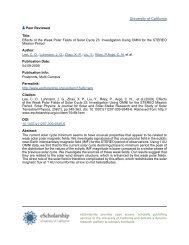

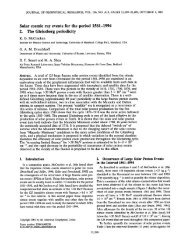
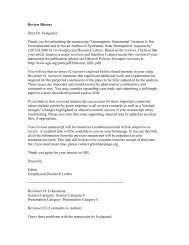

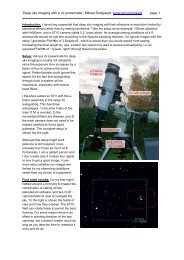
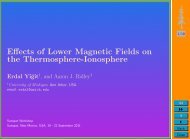
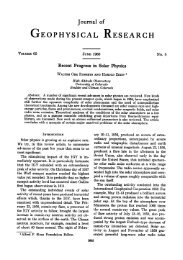
![The sum of two COSine waves is equal to [twice] the product of two ...](https://img.yumpu.com/32653111/1/190x245/the-sum-of-two-cosine-waves-is-equal-to-twice-the-product-of-two-.jpg?quality=85)
